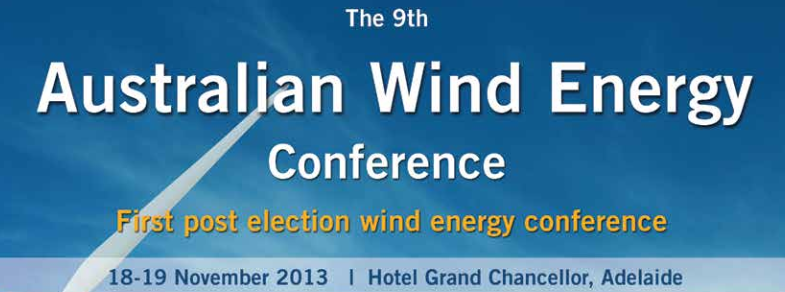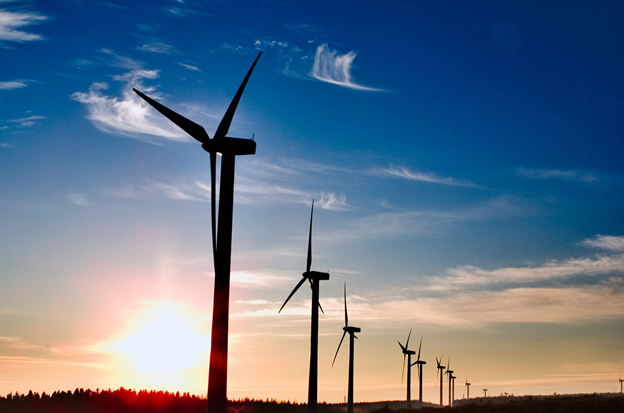This website uses cookies, including third party ones, to allow for analysis of how people use our website in order to improve your experience and our services. By continuing to use our website, you agree to the use of such cookies. Click here for more information on our and .
The wind turbine industry has been exposed to extensive media coverage and some public scrutiny in regards to noise exposure. Some critics are concerned that wind turbine noise or so-called infrasound may have negative health effects and diminish property values. Yet there is little published research that confirms “objective noise measurements”. Dr Con Doolan, Associate Professor at the University of Adelaide leads a research group investigating noise generated by fluid flow. In the lead-up to the 9th annual Australian Wind Energy conference, we had the chance to speak about the role of research in developing quieter wind turbines and the progress of his project to date.
Would you please explain the research you are involved in and why you took an interest in the subject?
Dr Con Doolan: I lead a research group whose focus is to investigate noise generated by fluid flow – that is the noise generated by jet engines, aircraft, valves, submarines. We are interested in anything where air or water flows over or through something and generates noise. Wind turbine noise is a logical extension of our work, with aerodynamically (i.e. flow) noise the dominant or loudest source of noise on a wind turbine. Also, it seemed to me that some scientific rigour was needed to assist the debate that was taking place in Australia and internationally concerning noise from wind turbines, and I though we could add something to that.
 Trailing edge noise does not contain infrasound. It is noise generated mainly in the audible frequency range. Wind turbines do produce infrasound by other means, but it seems to be well established now that infrasound levels from wind turbines are well below audibility thresholds – I can’t comment on possible health effects of infrasound as I am not a medical researcher.
Trailing edge noise does not contain infrasound. It is noise generated mainly in the audible frequency range. Wind turbines do produce infrasound by other means, but it seems to be well established now that infrasound levels from wind turbines are well below audibility thresholds – I can’t comment on possible health effects of infrasound as I am not a medical researcher.
One of the research projects you participate in is looking at blade swish and the noise generated from the trailing edge of turbine blades. Can you tell us about your findings to date?
Dr Con Doolan: Blade swish is caused by a feature of wind turbine trailing edge noise. This noise source doesn’t radiate out in all directions as you would normally expect, in fact, it radiates forward of the rotating blade, so listeners in front of a blade receive more acoustic energy than a listener behind it. As the blade is moving, somebody standing on the ground will hear a swishing sound as blade approaches and retreats from them. There is also another phenomenon that contributes to swish, and that is what we call convective amplification. This means that a noise source appears louder as it moves toward you. A combination of the directivity of trailing edge noise and convective amplification results in the swishing sound we hear.
What role can research play in developing quieter turbines?
 Dr Con Doolan: Research can help in many ways. By understanding the fundamentals of trailing edge noise, as we do in our lab and through computer simulation, we can design new wind turbine blade shapes that are quiet and efficient. On example of this are the serrated trailing edge inserts that are now appearing on some wind turbines in Australia. We are starting to look at novel trailing edge designs that use poroelastic materials that would enhance the quieting abilities of these inserts. Second, by understanding wind turbine noise production in more detail, our research can help advise industry, government and the public about wind turbine noise and help promote informed debate and good policy.
Dr Con Doolan: Research can help in many ways. By understanding the fundamentals of trailing edge noise, as we do in our lab and through computer simulation, we can design new wind turbine blade shapes that are quiet and efficient. On example of this are the serrated trailing edge inserts that are now appearing on some wind turbines in Australia. We are starting to look at novel trailing edge designs that use poroelastic materials that would enhance the quieting abilities of these inserts. Second, by understanding wind turbine noise production in more detail, our research can help advise industry, government and the public about wind turbine noise and help promote informed debate and good policy.
Wind turbine noise is influenced by a number of external elements. What factors will be considered in your research project?
Dr Con Doolan: There are many external elements, which include the turbulence and shear of the wind approaching a wind turbine and the formation of turbulence on the blade itself. These factors need to be controlled in a systematic manner in order to obtain a better understanding of the noise production. That is why we are developing a wind tunnel model of a working wind turbine to obtain data in a controlled manner. This will allow us to validate our predictive models and objectively test noise reducing technologies such as the next-generation trailing edge inserts.
You will be speaking at the 9th annual Australian Wind Energy Conference. What discussions would you like to have with industry and government peers at the event?
Dr Con Doolan: I’d like to look at ways to integrate our work and findings into their policy development. If we can bring quality research and scientific principles to the table, then we can help promote wind energy in a way acceptable to all. Also, I’d like to explore ways that we can use our research to help develop new technologies in wind energy, such as trailing edge inserts, that will assist in reducing noise as well as developing new high-tech R&D and advanced manufacturing industries.

